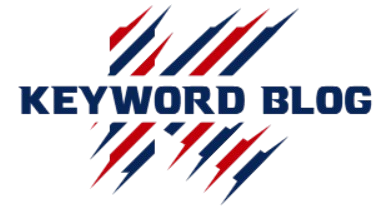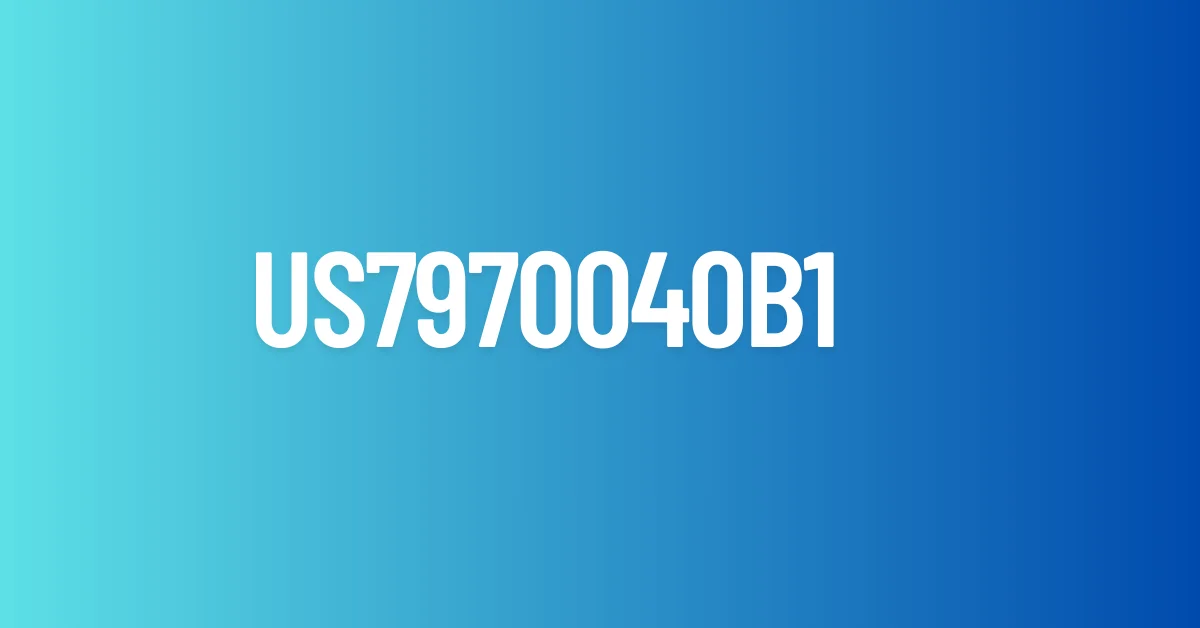Introduction to US7970040B1 Patent
In a world where precision defines innovation, the US7970040B1 patent stands out as a pivotal advancement in measurement technology. Imagine harnessing cutting-edge methods to achieve unparalleled accuracy—this is what this patent promises. It encapsulates how far we’ve come in the quest for exactitude and reliability across various industries. Whether you’re an engineer, a tech enthusiast, or simply curious about breakthroughs in measurement techniques, understanding this patent could open doors to new possibilities. Let’s delve deeper into what makes US7970040B1 so significant and explore its implications for our future!
Understanding the Importance of Precision in Technology
Precision in technology is a cornerstone of innovation. It dictates how effectively devices perform their intended functions. Without precision, even the most advanced technologies can falter.
In industries like aerospace and healthcare, accuracy is non-negotiable. A slight error can lead to dire consequences. Imagine aircraft operating with imprecise measurements; safety would be compromised.
Moreover, precision drives efficiency. When measurements are exact, processes streamline, saving time and resources. This efficiency translates into cost savings for businesses and better products for consumers.
As we advance into fields like artificial intelligence and robotics, the demand for precise algorithms grows exponentially. These technologies rely on meticulous data input to produce reliable outcomes.
Investing in precision not only enhances quality but also fosters trust between manufacturers and users. In an age where consumers expect flawless performance, maintaining high standards of precision has never been more crucial.
Description of the Invention: Method and Apparatus for Precision Measurement
The US7970040B1 patent introduces a groundbreaking method and apparatus designed specifically for precision measurement. At its core, the invention enhances accuracy in various applications by utilizing advanced technology.
This innovative system incorporates sensors that detect minute changes with exceptional sensitivity. By employing state-of-the-art algorithms, it processes data rapidly and effectively.
One standout feature is its ability to minimize environmental interference. This ensures that measurements remain consistent regardless of external factors like temperature or vibration.
Moreover, the apparatus can adapt to different materials and surfaces, enabling versatility across multiple industries. From manufacturing to scientific research, its potential applications are vast.
Every component has been meticulously engineered to ensure reliability. As a result, this invention stands at the forefront of precision measurement technology today.
Applications of US7970040B1
The applications of US7970040B1 span various industries, showcasing its versatility. In manufacturing, this technology enhances quality control through precise measurements. Accurate data helps ensure products meet stringent specifications.
Healthcare also benefits significantly from this patent. Medical devices rely on precision for accurate diagnostics and treatment delivery. The method ensures that parameters remain within necessary limits, improving patient outcomes.
Moreover, aerospace and automotive sectors utilize these measurement techniques to enhance safety and performance. Engineers can fine-tune designs based on exact measurements, leading to improved efficiency.
In research laboratories, the ability to obtain precise readings fosters innovation. Scientists can develop new materials or processes with confidence in their results.
Additionally, consumer electronics leverage this technology for better calibration of devices. Smartphones and wearables utilize precision methods to improve user experience through enhanced functionality.
Benefits and Advancements in Technology
US7970040B1 introduces groundbreaking advancements in precision measurement technology. It empowers industries to achieve unparalleled accuracy, vital in fields like manufacturing and healthcare.
Enhanced precision reduces errors significantly. This means products meet strict quality standards more reliably than ever before. Higher accuracy also translates into better outcomes in medical diagnostics, improving patient care.
Moreover, the invention streamlines processes across various sectors. Automation and data integration become seamless, leading to increased efficiency and reduced operational costs.
The ability to measure with such exactness opens doors for innovative applications. Companies can explore new territories that were previously unattainable due to measurement limitations.
As technology evolves, US7970040B1 stands at the forefront of this transformation, driving future innovations that prioritize precision and performance across multiple domains.
Challenges and Limitations
Despite the impressive features of US7970040B1, challenges remain. One significant hurdle is the complexity of calibration. Achieving accurate measurements demands precise adjustments that can be time-consuming.
Moreover, environmental factors can interfere with performance. Variations in temperature or humidity may affect measurement results, leading to inconsistencies.
The cost associated with implementing this technology cannot be overlooked either. High initial investments might deter smaller enterprises from adopting these advancements.
User training plays a critical role in maximizing effectiveness. Without proper understanding and skill development, even sophisticated tools like those outlined in US7970040B1 could fall short of their potential impact on accuracy and efficiency.
Future Implications and Possibilities
The future implications of US7970040B1 are vast and exciting. As industries increasingly rely on precision measurement, the impact will ripple across various sectors.
Imagine advancements in medical technology. Accurate measurements could lead to better diagnostics and treatments tailored to individual patients. This patent opens doors for innovations that elevate patient care significantly.
In manufacturing, enhanced precision means higher quality products with fewer defects. Businesses can streamline processes, reducing waste while maximizing output efficiency.
Moreover, the integration of this technology into consumer electronics may redefine user experiences. Devices might become more intuitive and responsive, adapting seamlessly to user needs based on precise data analysis.
As research continues to evolve around US7970040B1, potential applications in fields like robotics and artificial intelligence may emerge. These possibilities hint at a transformative era where accuracy drives functionality and innovation thrives effortlessly.
Conclusion
Precision is an essential aspect of modern technology, influencing various industries and applications. The US7970040B1 patent provides a significant contribution to the field with its innovative method and apparatus for precision measurement. By enhancing accuracy in measurements, this invention opens new avenues for development in sectors ranging from manufacturing to healthcare.
The applications of this patent are extensive. With improved measuring techniques, businesses can increase efficiency and reduce errors. This not only leads to cost savings but also enhances overall product quality.
While there are challenges associated with implementing such advanced technologies—like the need for specialized training or initial investment—the benefits often outweigh these obstacles. Advancements stemming from US7970040B1 could pave the way for further innovations that capitalize on precision measures.
Looking forward, as industries continue to evolve, the impact of patents like US7970040B1 will be felt across numerous fields. Positioning ourselves at the forefront of technological advancements ensures we embrace a future where precision becomes even more integral to our daily operations and creative endeavors.
The exploration into what US7970040B1 holds reveals much about our commitment to enhancing technology through innovation and careful design. Embracing such developments promises exciting possibilities ahead.
FAQs
What is US7970040B1?
US7970040B1 is a U.S. patent that covers a groundbreaking innovation in laser technology, designed to enhance precision and performance across various applications.
How does US7970040B1 improve laser accuracy?
The patent introduces advanced mechanisms and control techniques that significantly reduce deviation, enabling lasers to operate with ultra-high precision in targeting and cutting.
What industries benefit from US7970040B1 technology?
Industries such as manufacturing, medical devices, aerospace, and electronics gain the most from this innovation due to their demand for extreme accuracy and reliability.
Is US7970040B1 commercially implemented?
Yes, the technology has been integrated into several commercial laser systems, offering enhanced performance and setting new standards for precision tools.
Why is US7970040B1 considered a breakthrough?
Because it pushes the boundaries of traditional laser capabilities, introducing innovations that minimize error, maximize control, and open doors to next-gen applications.

